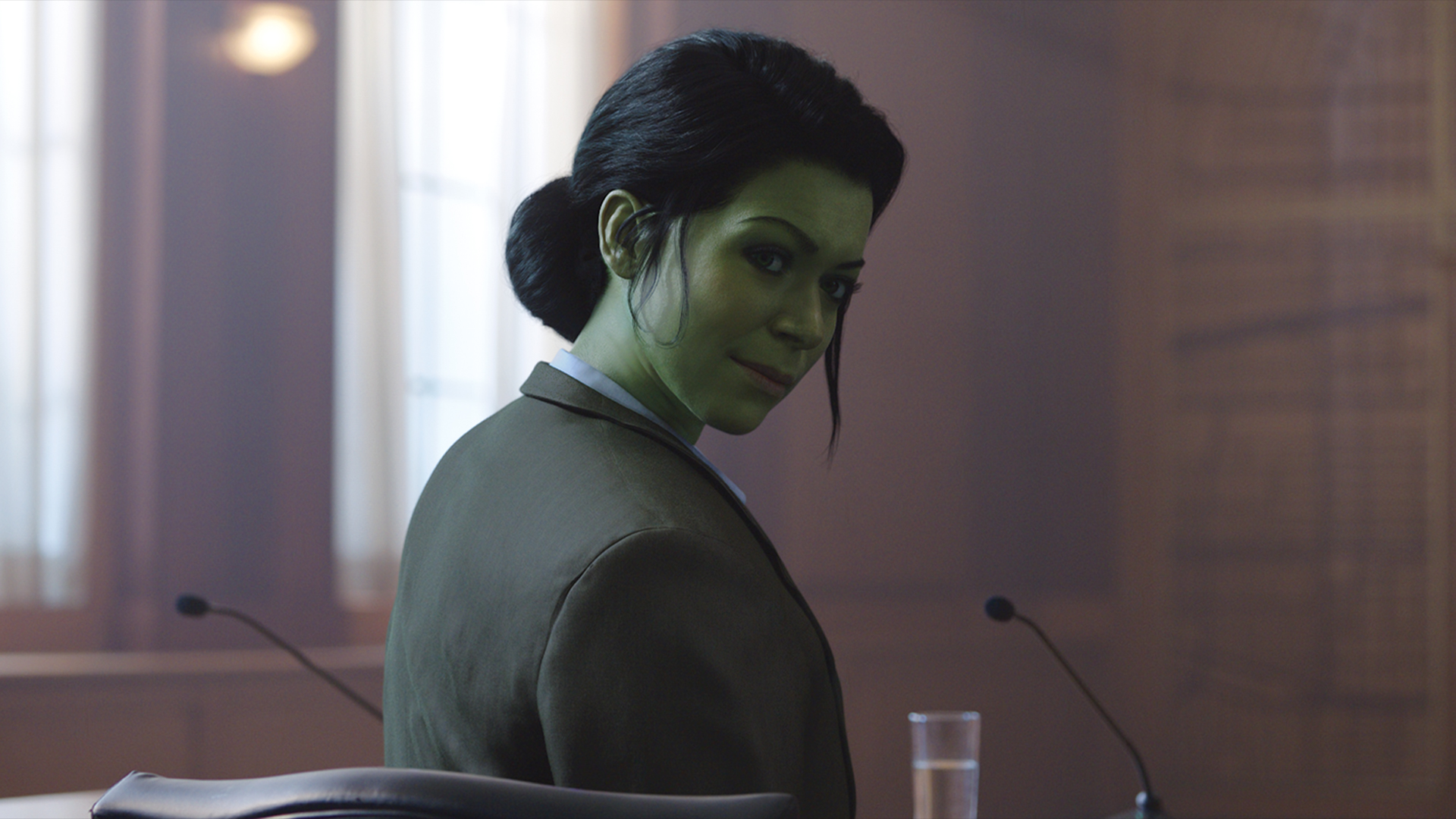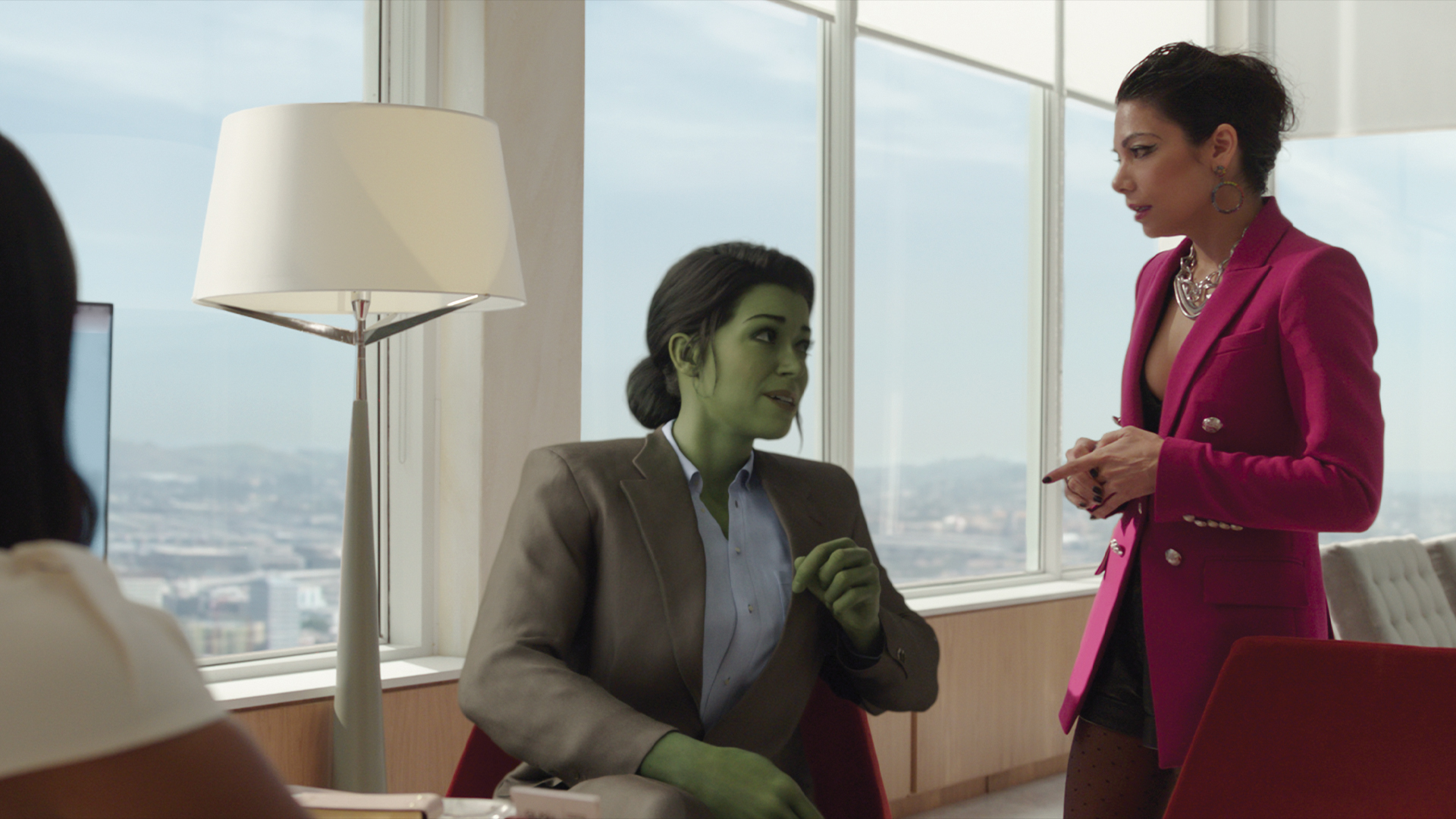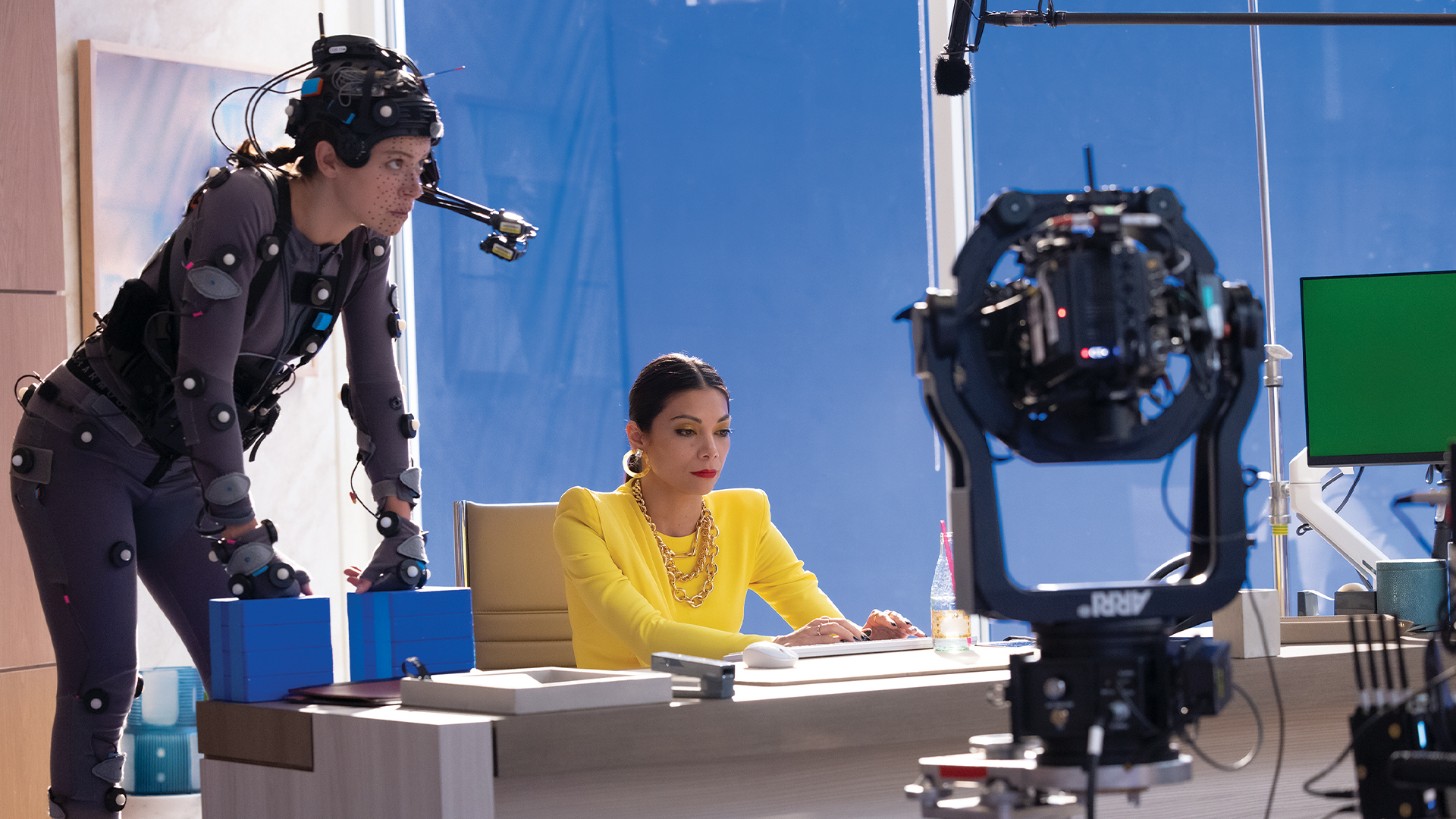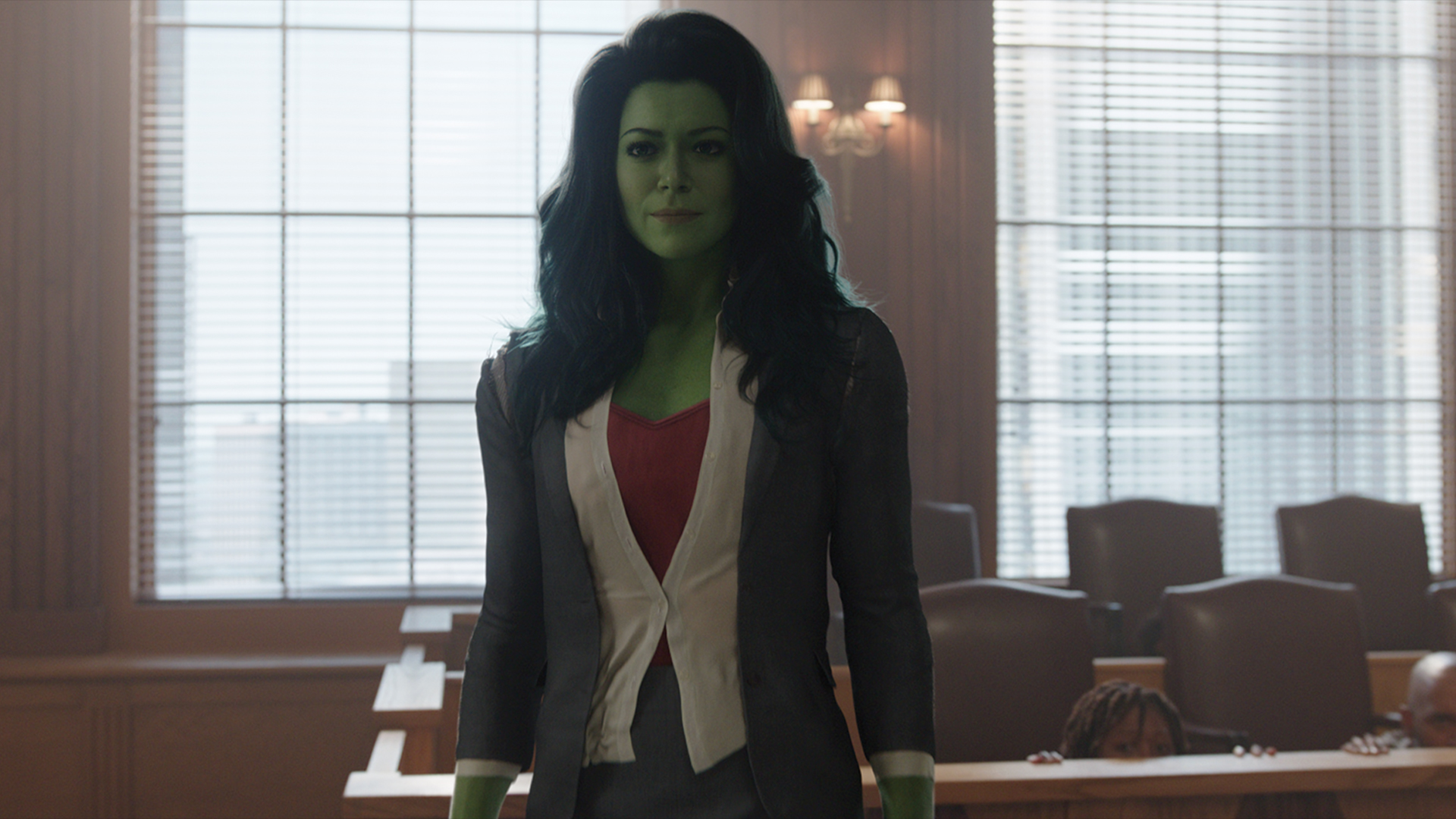
Liz Bernard has overseen incredible work on projects like She-Hulk: Attorney at Law, Free Guy, and Captain Marvel. Once upon a time though, she was just a child enamoured with the slapstick style of Looney Tunes cartoons. “I saved my allowance and bought Chuck Jones’s autobiography. That sparked my imagination and I realised this could be a career.”
Bernard studied theatre design and ran a photography business in West Africa before enrolling in the online school Animation Mentor, moving to Canada, and landing an animator job at revered VFX studio Digital Domain. Since then, she has gradually worked her way up to become senior animation supervisor, and sat down with 3D World to explain what her role looks like on a day-to-day basis.
08:30 Like most people in this industry, I work from home now, so my mornings are a little more chill than they used to be. I start with half an hour of exercise most days, have breakfast, take a shower, walk the dogs, and sit down at my desk around 9am, sometimes a little earlier if I want to get ahead.
09:00 Like any job, I’m looking at my emails first and then double checking my calendar, which is packed most days. Whatever show I’m working on at the time usually has me scheduled into a bunch of meetings. Then I’ve got animation dailies that usually fall pretty early.
09:30 Reviewing animation with my team is a big chunk of my role. At DD, we have at least an hour, sometimes way more, of dailies to look at shots the animators submit. We go through how the animation is coming along, and how it’s fitting into the larger cut. On She-Hulk, we had four hours of dailies. It was such a big show that I had another animation supervisor to help me.

10:30 The level of polish on She-Hulk was higher than on some movies I’ve worked on. With Tatiana [Maslany] in the lead role, she’s so elastic and there’s so much detail in her performance; she’s
a very dynamic actor. My co-sup and I were commenting on pixel- level adjustments of things like eyelids, eye darts and lip corners. The amount of review time and animation work that went into the show was bonkers.
13:00 I always say lunch is sacred, you have to have lunch. Any time meetings start creeping into my lunch hour, I’m like, “Peace out.” Always take that hour for lunch. It’s important to get away from the screen, look at something else and just reset your brain for the afternoon.
14:00 Often I just go wherever my calendar tells me I’m supposed to be. I usually have so many meetings during the day that sometimes it’s lovely to have a full afternoon to work on other things. I like that variety. I like that there’s structure to my day, but that I also sometimes get these big chunks of time where I can work on things.

15:00 Towards the end of the day, if I have time, I look through versions the animators submit to get ahead on notes for the following day. We try not to do too much overtime at DD, but there are shows where crunch time will happen. So I try to ensure I’m not holding up my team by making sure they have all the information they need, rigs work correctly, and that they’re happy and supported.
16:00 On She-Hulk, I organised some fun morale-building stuff. I bought a bunch of She-Hulk Funko POP!’s before the show came out. I bought so many that the price went up on Amazon in Canada. Then I came up with some challenges, like writing a haiku about She-Hulk or inventing a dating profile for her, and we’d let the whole team vote on their favourites. Whoever won got the Funko that week. It was a fun little diversion from the day-to-day work.
18:00 I try to have at least an hour- long walk with my dogs every day. It’s also really important to have something else you care about, so that when work is hard or frustrating, you have something else to sustain you. Somebody once told me they called that their ‘other thing’. My other thing is sailing here in British Columbia. My partner and I teach sailing and often go on adventures for a week or two.
Liz's top tips for aspiring animators

What advice can you give to animators that want to land a role like yours?
For artists getting into animation that don’t know what to focus on, research the companies and studios that make your favourite shows, games, and so on, and see what jobs they have listed. They might not have the one you want on the day you look, but see what requirements their jobs have. Some might say a minimum of three years of experience. How can you get a job if entry-level requires experience? Sometimes companies will just hire you if your reel is good.
You need four things to get a job: you need to be in the right location; have a good portfolio or reel; a good attitude; and a bit of luck in your timing. When I got my job at DD, I was already living in Vancouver and my reel was good enough. They needed animators right away, so they hired me even though I didn’t have much experience. People think you have to get lucky to enter this industry, but you have to make your own luck too.
What traits does an animator need to work somewhere like Digital Domain?
It’s important for us to find people that fit with the company culture, and that’s all about soft skills. Being friendly, open and able to take feedback are huge, as is being team-minded. Watch the credits for any movie or TV show that has a significant VFX component and it’s hundreds of people working together. So you have to be a team player, and a large part of that is just being nice.
I appreciate diligence too. Artists sometimes have a reputation for being flaky, but the best artists on my team know their schedules and can deliver. That requires executive decision-making, time management and communication. Sometimes what I ask for isn’t possible in the timeframe, and so I want my artists to be able to say, “Liz, this ain’t happening. I need another day.”
How does a background in theatre and photography help in your role?
A big part of my job is looking at things from the bigger picture, making sure the story and character comes through in the show or film, not just in the individual shots. On She-Hulk, it was important to understand character, emotions, subtext, and body language. My theatre background prepared me directly for that; directing and acting, but also lighting design, which is about setting a mood and directing the eye. My photography background also helped with scene composition and understanding where to put things in the frame.
Both helped develop my people skills. You have to learn how to talk to clients and understand what they say they want, versus what they actually want, take feedback well, interpret it, and provide the client with something they are happy with.
This interview originally appeared in 3D World magazine, the world's leading digital art, CG and VFX magazine. 3D World is on sale in the UK, Europe, United States, Canada, Australia and more. Limited numbers of 3D World print editions are available for delivery from our online store (the shipping costs are included in all prices).







